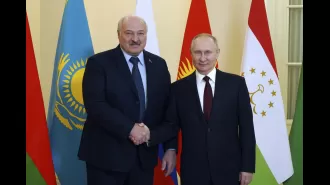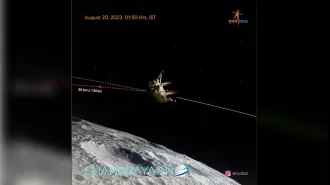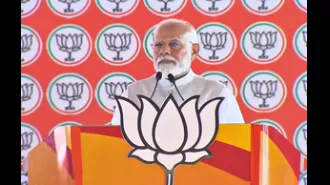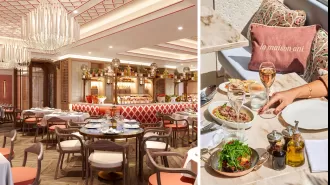Discover the hidden history of the Channel Tunnel as it celebrates its 30th anniversary.
Thousands of people were hired for the project, with French and British workers coming together on December 1, 1990.
May 5th 2024.
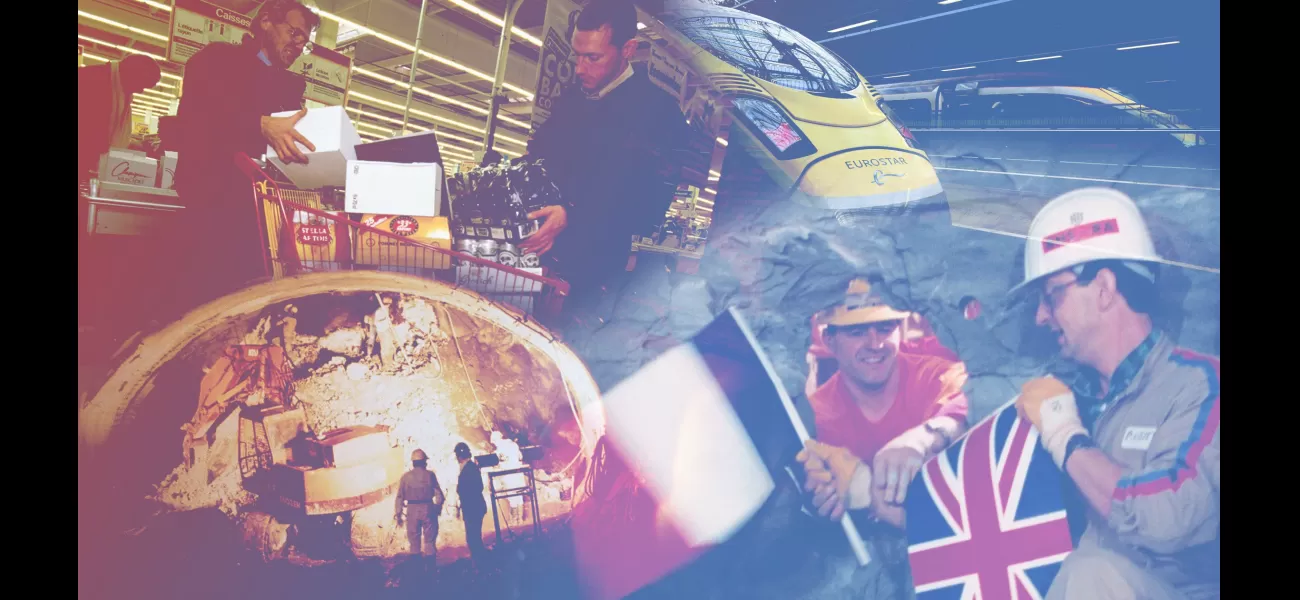
The opening of the tunnel marked the beginning of a new era in travel, connecting Britain to mainland Europe for the first time in history. It's been almost 30 years since this groundbreaking event, and the Channel Tunnel, affectionately known as the 'chunnel', is still helping millions of commuters cross from the Strait of Dover to France each year.
While the idea of building a tunnel between the two countries was first suggested in 1802, it wasn't until the 1980s that plans were put into action. It was a massive undertaking and the most expensive construction project ever proposed at the time, costing a whopping £9 billion, equivalent to £22 billion in today's money. The six-year process, which was completed in 2024, was not without its challenges, and sadly, ten workers, eight of them British, lost their lives during the construction.
Now, thirty years on from its opening, The Agency has taken a deeper look into the famous tunnel, uncovering fun facts, historical details, and specific information. Surprisingly, the idea for the 'chunnel' was first proposed by a French mining engineer, Albert Mathieu-Favier, in 1802. His proposal even included plans for an artificial island in the middle of the channel, where travelers could 'change horses' and oil lamps would light the tunnel.
Over the next century, surveys were conducted by both French and British experts to determine the feasibility of a tunnel, but they were abandoned due to fears that it could be used as an 'invasion route'. However, in 1986, the Channel Tunnel Group and France-Manche were given the rights to the project, and construction officially began in 1988. It was a massive undertaking, with over 15,000 people employed during the process. French and British construction crews met halfway on December 1, 1990, and exchanged gifts to celebrate the milestone.
The official opening of the Channel Tunnel was on May 6, 1994, and it was a momentous occasion. French President Francois Mitterrand and Queen Elizabeth II both traveled on trains towards each other, stopping 'nose to nose' in the tunnel. A ceremony was held in Calais, and the tunnel was opened to various forms of transportation, including lorries, freights, cars, trains, coaches, and even bicycles.
But just how big is the Channel Tunnel? Well, it's approximately 32 miles long, stretching from Folkestone to Calais, which means it could fit 4827 London buses inside! It reaches an impressive depth of 245 feet below the surface, equivalent to 107 baguettes stacked on top of each other. And while the walls are three feet thick, the tunnel does actually leak, but it's designed to allow water to permeate through and is then pumped away.
Aside from being a remarkable engineering feat, the Channel Tunnel also has some fascinating facts. For example, some British workers would travel to France during construction to purchase cheaper beer, wine, and cigarettes. And while most people think of it as one long tube, it's actually made up of three tunnels - two for trains and one smaller service tunnel for emergencies.
Over the years, the chunnel has seen its fair share of celebrity visitors, including the Olympic Torch on its way to London for the 2012 games. It's also the first landlink between England and France in over 8,000 years, and it still has a lifespan of more than 90 years left. Sir John Armitt, Chair of the National Infrastructure Commission, and a Fellow of the Royal Academy of Engineering, describes it as an "engineering triumph and a social good." He also highlights the importance of stable policymaking when it comes to building major infrastructure, as the delays in the construction of the Channel Tunnel were largely due to changes in political will.
While the idea of building a tunnel between the two countries was first suggested in 1802, it wasn't until the 1980s that plans were put into action. It was a massive undertaking and the most expensive construction project ever proposed at the time, costing a whopping £9 billion, equivalent to £22 billion in today's money. The six-year process, which was completed in 2024, was not without its challenges, and sadly, ten workers, eight of them British, lost their lives during the construction.
Now, thirty years on from its opening, The Agency has taken a deeper look into the famous tunnel, uncovering fun facts, historical details, and specific information. Surprisingly, the idea for the 'chunnel' was first proposed by a French mining engineer, Albert Mathieu-Favier, in 1802. His proposal even included plans for an artificial island in the middle of the channel, where travelers could 'change horses' and oil lamps would light the tunnel.
Over the next century, surveys were conducted by both French and British experts to determine the feasibility of a tunnel, but they were abandoned due to fears that it could be used as an 'invasion route'. However, in 1986, the Channel Tunnel Group and France-Manche were given the rights to the project, and construction officially began in 1988. It was a massive undertaking, with over 15,000 people employed during the process. French and British construction crews met halfway on December 1, 1990, and exchanged gifts to celebrate the milestone.
The official opening of the Channel Tunnel was on May 6, 1994, and it was a momentous occasion. French President Francois Mitterrand and Queen Elizabeth II both traveled on trains towards each other, stopping 'nose to nose' in the tunnel. A ceremony was held in Calais, and the tunnel was opened to various forms of transportation, including lorries, freights, cars, trains, coaches, and even bicycles.
But just how big is the Channel Tunnel? Well, it's approximately 32 miles long, stretching from Folkestone to Calais, which means it could fit 4827 London buses inside! It reaches an impressive depth of 245 feet below the surface, equivalent to 107 baguettes stacked on top of each other. And while the walls are three feet thick, the tunnel does actually leak, but it's designed to allow water to permeate through and is then pumped away.
Aside from being a remarkable engineering feat, the Channel Tunnel also has some fascinating facts. For example, some British workers would travel to France during construction to purchase cheaper beer, wine, and cigarettes. And while most people think of it as one long tube, it's actually made up of three tunnels - two for trains and one smaller service tunnel for emergencies.
Over the years, the chunnel has seen its fair share of celebrity visitors, including the Olympic Torch on its way to London for the 2012 games. It's also the first landlink between England and France in over 8,000 years, and it still has a lifespan of more than 90 years left. Sir John Armitt, Chair of the National Infrastructure Commission, and a Fellow of the Royal Academy of Engineering, describes it as an "engineering triumph and a social good." He also highlights the importance of stable policymaking when it comes to building major infrastructure, as the delays in the construction of the Channel Tunnel were largely due to changes in political will.
[This article has been trending online recently and has been generated with AI. Your feed is customized.]
[Generative AI is experimental.]
0
0
Submit Comment

